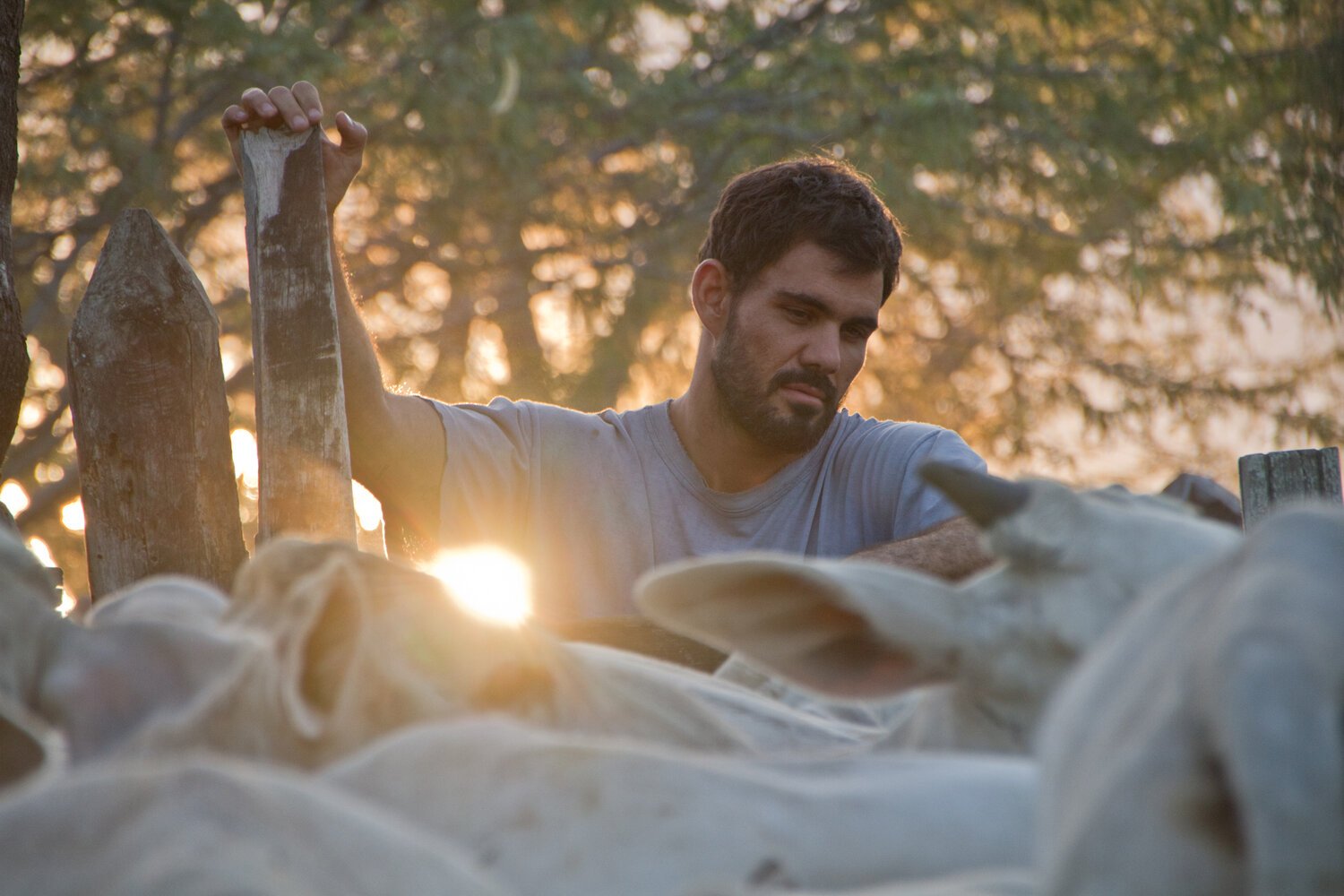Non-/Human Hinterlands in Neon Bull
Neon Bull, Gabriel Mascaro (2015)
In Boi Neon (Neon Bull), humans and non-humans coalesce in tenable, queer ways, forming more than merely murky concoctions; rather, they come together as immiscible yet inextricable substances that passively resist normative epistemologies. Humans copulate with one another as horses calmly chew hay. Holding them in a dimly-lit wide shot, director Gabriel Mascaro and cinematographer Diego García render them into the same composition, distinguished only by the sounds of a female orgasm.
This film lives within the margins of the vaquejada (rodeo) in the Nordeste (north-eastern) region of Brazil, where Iremar (Juliano Cazarré) works as a bull-keeper alongside his other male co-workers, while also sewing jazzy outfits for a rodeo-dancer, Galega (Maeve Jinkings), and serving as the sometimes-confidante of her daughter Cacá (Alyne Santana). Together, they form a strange assemblage of kinships that merge with the bulls and horses that live beside and through them. The camera dwells on non-human non-happenings in a manner reminiscent of Emmanuel Gras' Bovines. But these non-/human assemblages are far from democratic or equalizing—they are keenly aware of the capitalist coercions that govern their hierarchies. Horses are deified, unattainable; they are stroked with awe but chastised for their mainly aesthetic value. Bulls are cheap, stupid; they're shoved into pens and trucks, branded and slapped, but are useful. These assemblages aren't eco-utopian or transcendent visions as the film's languid camerawork or stunning aesthetics might suggest.
Neon Bull, Gabriel Mascaro (2015)
Hydric worlds are parched yet swampy, and give way to a fluid subterranean world opaque to those who live outside it. This asymmetry plays throughout the film. Tropical landscapes are painted onto rocks in a bleak xeric landscape to announce the imminent arrival of a massive fashion corporation; dismembered mannequins litter the land; Galega gyrates lasciviously in shiny strings like a trussed-up bull while wearing a horse's head for the men at the rodeo—the eco-utopian becomes a bitter joke, and we are entrenched in an ecological semi-paralysis. Gloria Anzaldúa writes in her seminal work, Borderlands/La Frontera: The New Mestiza, that "a borderland is a vague and undetermined place created by the emotional residue of an unnatural boundary. It is in a constant state of transition." She argues for a hybrid queer, political, and social performance that resists Western rationality and nomenclature. Neon Bull, too, is undetermined, hybrid, and resistant as a film-scape and performance, but rather than being a borderland between two knowable spaces, it exists beyond it—a hinterland that is in stasis rather than constant transition.
Brazil's Nordeste was primarily occupied by indigenous peoples colonized by the Portuguese in the 1500s onwards (as well as the French and Dutch), but hybridity and politics are present at a cellular level in its contemporary make-up, arising not only from colonialism but also the presence of migrant slave laborers, who were forcibly transplanted to the region by colonizers from Africa. In Neon Bull, this traumatic and permeating history of genealogies and hierarchies find its livedness through radical instances. A mainstay of the film, horses are sold in gene-pool based auctions, forming a disconcerting mix of near-bestiality, breeding, and predicated on the value of blue-blood eggs from mares and prize-stallion sperm. To put it simply, Iremar and his co-worker, Zé, masturbate a horse after arousing it with a woman's used underwear, in order to collect and sell its sperm to breeders who want to rear horses from the "master bloodline." Such instances speak to a world within which morality, especially middle-class Western morality, is not only dubious but in which its very concept is ignored.
Neon Bull, Gabriel Mascaro (2015)



